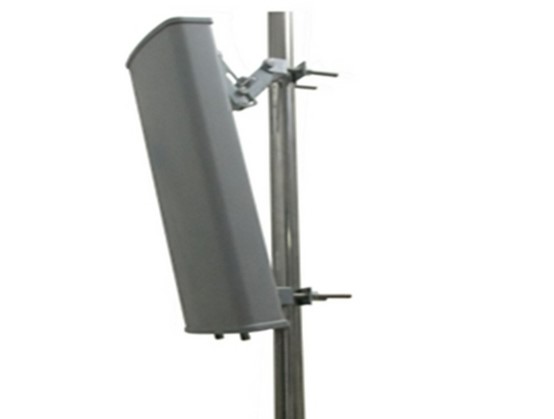Outdoor GSM Antenna: Paving the Way for Seamless Communication
In our modern world, staying connected is paramount, and outdoor GSM antennas play a pivotal role in making this happen. These often-underappreciated devices are the unsung heroes behind robust mobile communication. In this in-depth exploration, we will uncover the world of outdoor GSM antennas, from their definition and types to factors for choosing the right one, installation, maintenance, and the exciting trends shaping their future.

Introduction to Outdoor GSM Antenna
Definition and Purpose
An outdoor GSM antenna is a specialized piece of equipment designed to transmit and receive GSM (Global System for Mobile Communications) signals effectively. Its primary purpose is to enhance mobile network coverage, ensuring that you can make calls, send texts, and access mobile data services even in areas with weak or distant cell towers.
Importance of Antenna in GSM Communication
The significance of GSM antennas in communication cannot be overstated. They serve as the essential link between your mobile device and the cell tower. Without a high-quality antenna, your phone's signal strength would be insufficient for reliable communication. These antennas ensure that you can stay connected wherever you are, whether in urban areas with many cell towers or remote locations with limited coverage.
Types of Outdoor GSM Antennas
Understanding the different types of outdoor GSM antennas is crucial for selecting the one that best suits your needs.
Omni-Directional Antennas
Omni-directional antennas radiate signals in all directions, providing 360-degree coverage. They are ideal for areas with multiple cell towers or where signals arrive from various directions. These antennas are often used in urban environments to ensure coverage in all directions.
Directional Antennas
Directional antennas focus their signal in a specific direction. They offer greater range and signal strength but have a narrower beamwidth. They are commonly used in rural or remote areas to reach distant cell towers or when aiming at a particular tower is necessary.
Yagi Antennas
Yagi antennas are a type of directional antenna known for their high gain and long-range capabilities. They are designed with multiple elements and are excellent for point-to-point communication or connecting to a distant cell tower.
Panel Antennas
Panel antennas are compact and designed for both indoor and outdoor use. They provide directional coverage and are often used in urban environments where space is limited or aesthetics are a concern.
Factors to Consider when Choosing an Outdoor GSM Antenna
Selecting the right outdoor GSM antenna involves evaluating several crucial factors.
Frequency Compatibility
Ensure that the antenna's frequency range is compatible with the GSM frequencies used by your mobile carrier. A mismatch can result in poor signal quality or no signal at all.
Gain and Signal Strength
Gain refers to an antenna's ability to amplify signals. Higher gain antennas provide stronger signals, which can be vital in areas with weak coverage.
Beamwidth and Directionality
Consider the beamwidth of the antenna, which determines the width of the signal path. Narrower beamwidths focus the signal but may limit coverage. Choose the beamwidth that suits your coverage requirements.
Weather Resistance and Durability
Outdoor GSM antennas are exposed to the elements, so durability is crucial. Look for antennas built to withstand rain, wind, UV radiation, and extreme temperatures.
Mounting Options and Installation Considerations
Think about where and how you plan to mount the antenna. Options include pole mounting, wall mounting, or rooftop installations. Proper installation is essential for optimal performance.
Installation and Placement of Outdoor GSM Antenna
Optimal Antenna Placement for Signal Strength
To maximize signal strength, place the antenna where it has a clear line of sight to the nearest cell tower. Ensure there are minimal obstructions, such as buildings or trees, between the antenna and the tower.
Mounting Options and Fixing Techniques
Select the appropriate mounting option based on your location and available structures. Use sturdy and weather-resistant materials to secure the antenna.
Cable Routing and Connectors
Proper cable routing and connectors are vital for maintaining signal integrity. Use high-quality cables and connectors to minimize signal loss.
Proper Grounding and Lightning Protection
Ground the antenna to protect against lightning strikes and electrical surges. Lightning can cause significant damage if the antenna is not adequately grounded.
Maintenance and Troubleshooting of Outdoor GSM Antenna
Regular Inspection and Cleaning
Routine inspections and cleaning help prevent dust buildup, corrosion, or damage that could degrade performance. Clean the antenna and its components as needed to ensure clear signal transmission.
Detecting and Addressing Signal Issues
If you experience signal problems, conduct a thorough inspection of the antenna and associated equipment. Check for loose connections, cable damage, or signs of wear and tear.
Fixing Cable and Connector Problems
Signal issues are often caused by damaged cables or connectors. Replace any damaged components promptly to restore optimal performance.
Troubleshooting Common Antenna Problems
Common antenna problems include signal dropouts or reduced range. Systematic troubleshooting, including checking connections and adjusting settings, can help identify and resolve these issues.
Advancements and Future Trends in Outdoor GSM Antennas
Outdoor GSM antennas continue to evolve in response to technological advancements and changing communication needs.
5G Compatibility and Integration
The rollout of 5G technology has led to the development of antennas compatible with this high-speed network. These antennas offer faster data speeds and lower latency, driving the adoption of 5G technology.
Antenna Technology Improvements
Ongoing research and development efforts focus on enhancing antenna technology. This includes improving gain, reducing signal interference, and increasing efficiency.
Enhanced Signal Processing and Efficiency
Advanced signal processing techniques are being integrated into antennas to enhance signal quality and reduce interference, resulting in more reliable connections.
Conclusion
In summary, outdoor GSM antennas play a crucial role in ensuring seamless communication. Understanding the types of antennas available, the factors to consider when choosing one, proper installation, maintenance, and awareness of emerging trends are all essential for harnessing the power of these devices. As technology continues to advance, outdoor GSM antennas will remain at the forefront of enabling reliable mobile communication, connecting people across the globe.

 Mobile Signal Booster
Mobile Signal Booster